Just what does an invasive species look like? There are many different invaders in the Lake Zurich area. Here are a few that may be on your property. Buckthorn (Rhamnus cathartica): Buckthorn is a shrub (although it can reach over 20 feet in height) that comes as male or female. A mature females can produce thousands of berries each growing season. These are not particularly tasty to birds, but when a hungry bird does eat them, two results follow: the bird gets diarrhea and the seeds are spread to other areas. It spreads quickly.
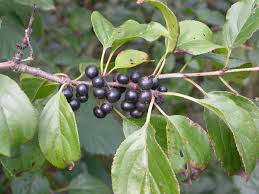
Female buckthorn has dark berries that are spread by birds.
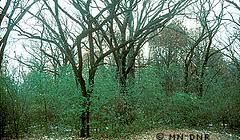
The leaves of the buckthorn stay attached late into the fall. This makes them easy to identify.
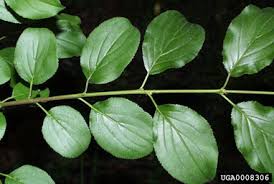
Male buckthorns have no berries.
Honeysuckle (Lonicera japonica) Once commonly planted to form hedges and enjoyed for its fragrant flowers, honeysuckle is no longer sold due to its invasive habits. It has bright red or orange berries which, like buckthorn, are eaten by birds and distributed in feces. Honeysuckle spreads out with weak but tenacious roots. All the roots must be removed or this plant will resprout, even if it looks dead.
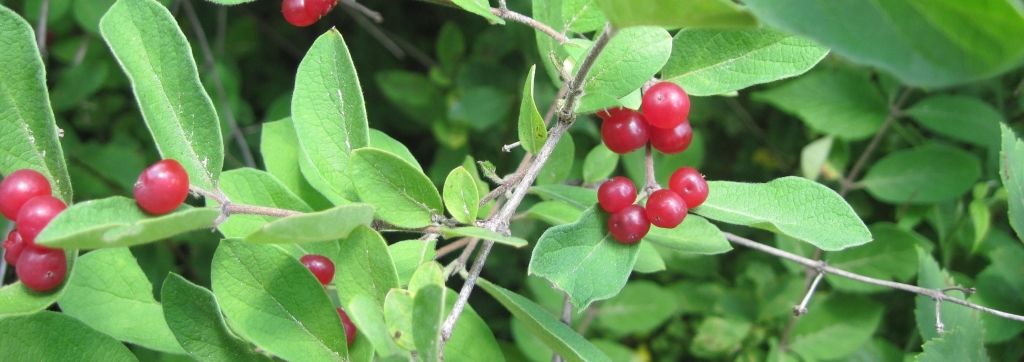
The honeysuckle has red, orange or yellow berries that are spread by birds.
Garlic Mustard (Alliaria petiolata) Garlic mustard is a spring flowering plant that, when cut, smells like garlic. It is a biennial- the first year of growth shows a rosette of leaves. Its second year plant sends up multiple stalks with very small white flowers. It produces seeds that quickly crowd out native plants. The best solution? In spring pull it out by the roots before it grows.
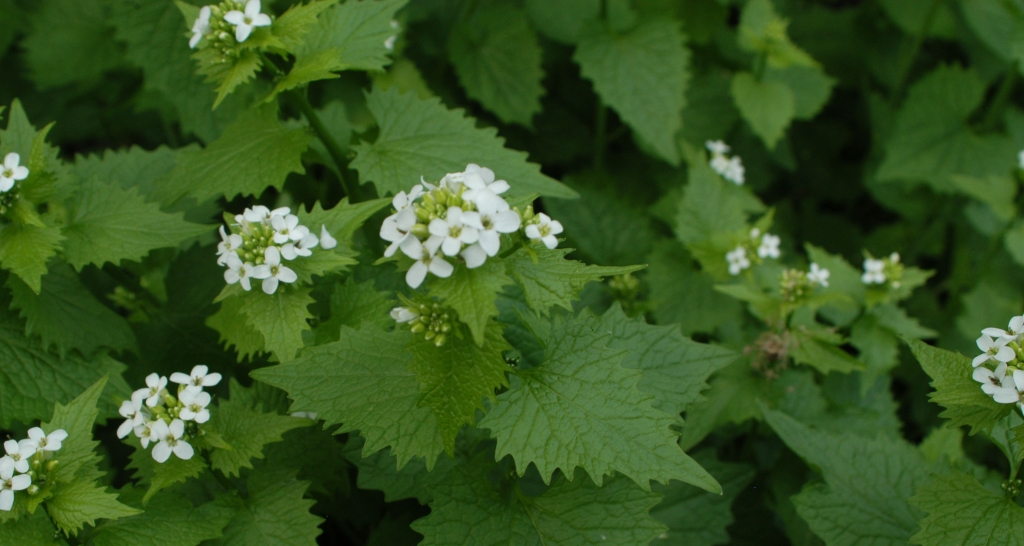
Garlic mustard grows in shaded areas. Each plant produces thousands of seeds.
Common Reed (Phragmities Australis) If you have a wetland on your property and have an infestation of phragmities australis (common reed), you will want to get professional help by a landscape company that specializes in the care of natural areas. Phragmites spread quickly (just look behind the Lake Zurich Target to see the damage it can cause) but can be treated if caught early.
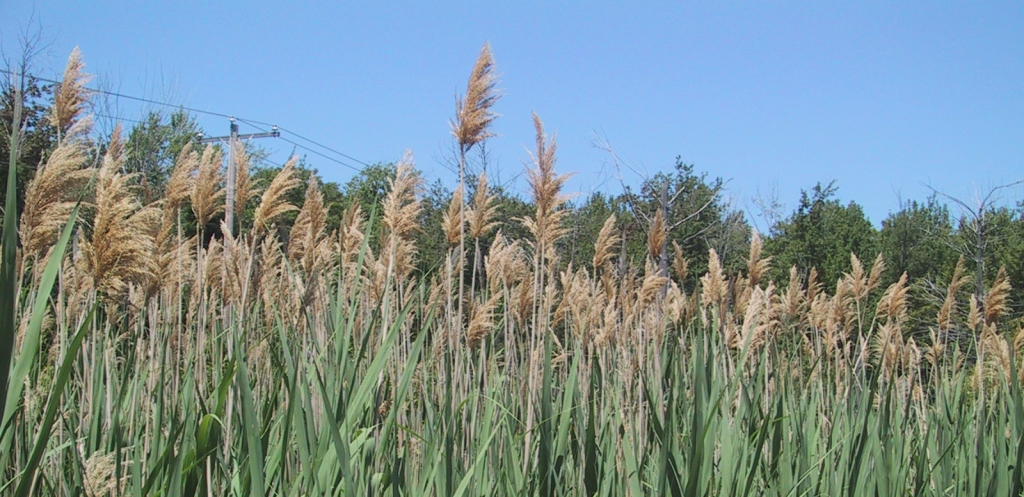
Phragmites, also called common reed, is a native of Australia and has inundated our wetlands. It spreads quickly, mostly by underground rhizomes and needs early professional treatment to stop its spread.

